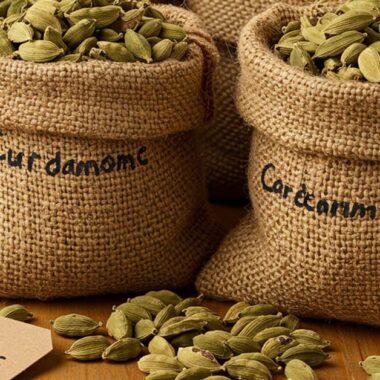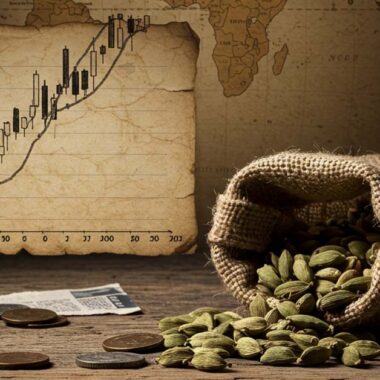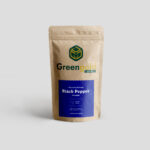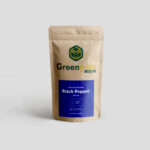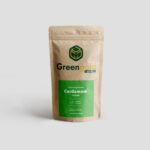Cardamom, often referred to as the “Queen of Spices”, has a rich history deeply intertwined with the global spice trade. From its ancient origins in the tropical forests of India to its widespread use across the globe, cardamom has played a significant role in shaping the course of world history. 🌟
In this blog, we will explore how cardamom became one of the most coveted spices, its journey through trade routes, and its influence on the world as we know it today.
1. The Origins of Cardamom 🌱
Cardamom is native to the subtropical regions of India, Sri Lanka, and Guatemala. It has been cultivated for thousands of years, with archaeological evidence suggesting its use in ancient Egypt, Greece, and Rome. The spice was not only valued for its flavor but also for its medicinal properties. 🌸
In fact, cardamom was so prized that it became one of the key ingredients in ancient Egyptian perfumes and cosmetics. Additionally, it was used in traditional remedies for digestive issues and respiratory problems. 🌿
2. The Spice Trade Begins 🛳️
The spice trade was one of the most important industries in ancient history. The desire for exotic spices like cardamom, black pepper, cinnamon, and cloves led to the establishment of vast trade networks that spanned across continents.
Ancient Trade Routes 🌍
- The Silk Road: This ancient network of trade routes connected China, India, and the Middle East with Europe. Cardamom was one of the valuable commodities transported along these routes.
- The Incense Route: Running from the Arabian Peninsula to the Mediterranean, this route was critical in the trade of spices like cardamom, along with frankincense and myrrh.
The Role of Arabs in the Spice Trade 🌙
The Arab merchants played a significant role in the spice trade during the Middle Ages. They were responsible for bringing cardamom and other spices from the Indian subcontinent and the Far East to the Mediterranean. These traders often acted as middlemen, making a huge profit by transporting spices to Europe, where demand was high.
3. European Exploration and the Search for Spices 🏰
In the 15th and 16th centuries, European explorers set sail to find new spice routes, primarily to access coveted spices like cardamom, nutmeg, and pepper. The competition for these valuable commodities led to the Age of Exploration.
The Portuguese and the Spice Islands 🇵🇹
- In 1498, Vasco da Gama sailed to India and opened up a new sea route for Europeans to access the rich spice markets.
- By the early 1500s, the Portuguese were in control of the spice trade, particularly the Malabar Coast in India, where cardamom was grown in abundance. They established strongholds on the Spice Islands, which were crucial for the European spice trade.
Dutch and British Involvement 🇳🇱🇬🇧
In the 17th century, the Dutch East India Company and British East India Company became major players in the spice trade. They sought to control the production and distribution of spices like cardamom, cloves, and nutmeg.
- The Dutch monopolized the spice trade in the East Indies, while the British took control of the Malabar Coast and began cultivating cardamom in their colonies like Sri Lanka and South India.
This competition for control of the spice markets fueled colonial expansion, leading to the establishment of global trading empires. 🌏
4. The Global Spread of Cardamom 🌍
By the 19th century, cardamom had spread to various parts of the world, including Guatemala, which is now one of the largest producers of cardamom. 🌱 The global demand for the spice led to the establishment of large-scale cardamom plantations in countries such as India, Sri Lanka, and Guatemala.
Cardamom in Modern Times 🌿
Today, cardamom is grown in several tropical countries, with India remaining the largest producer and Guatemala becoming the second-largest exporter. The cardamom trade is a vital part of the economies of these countries, providing employment and supporting local communities.
The spice is used extensively in culinary applications, especially in Middle Eastern, Indian, and Scandinavian cuisines. It is also popular in the preparation of chai tea and coffee. ☕🌸
5. The Impact of Cardamom on the Global Economy 💰
The spice trade has always had a significant impact on the global economy, and cardamom is no exception.
Economic Value 💵
- India and Guatemala dominate the cardamom market, and their economies heavily rely on the spice trade.
- The global demand for cardamom continues to grow, driven by its use in food products, perfumes, and medicinal applications.
Fair Trade and Sustainability 🌱
In recent years, there has been a growing emphasis on fair trade and sustainability in cardamom production. Consumers are increasingly aware of the environmental and social impact of spice farming, and many farmers are adopting sustainable farming practices to ensure the long-term health of cardamom plantations.
6. Conclusion: Cardamom’s Timeless Legacy 🌸
Cardamom’s journey from the forests of India to the spice markets of the world is a fascinating tale of trade, exploration, and cultural exchange. Its presence in ancient rituals, culinary masterpieces, and medicinal remedies showcases its enduring significance.
As the spice trade continues to evolve, cardamom remains a valuable commodity, connecting cultures across the globe and enriching lives with its aromatic fragrance and health benefits. 🌏🌿

